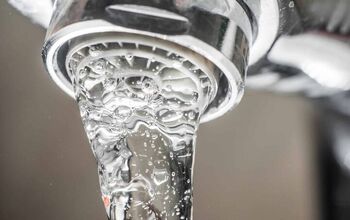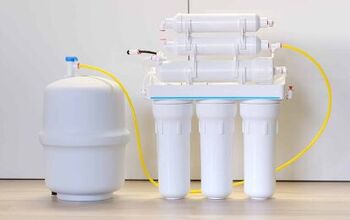How Much Does It Cost to Balance Your HVAC System?

If you have ever felt a hot or cold spot in your house, your HVAC system is likely unbalanced. Air balancing is the process of testing the outputs of your HVAC units and adjusting them to provide even airflow. This improves air circulation, ensures your system operates at peak efficiency, and creates even and comfortable temperatures.
If you are considering upgrading your heating or air conditioning system, get a quote from local contractors in your area here.
The average cost to balance an HVAC system is $2,000, and it costs $200 per duct for new ductwork. Homeowners spend an average of $1,125 to balance 10 HVAC openings, $1,575 for 14 openings, and $2,250 for a four-bedroom house with 20 openings. It costs $1.50 per square foot in material costs to repair ducts.
Not only is an unbalanced system uncomfortable, but also it is raising your energy bill unnecessarily. Finally, it can extend the life of your HVAC system. Therefore, you will find that the cost of balancing your system is a good investment.
Cost of Balancing your HVAC System
A Certified Air Balance will cost between $75 and $150 per opening. This includes the air supply duct, which blows air into the room, and the return air duct, which takes the air out. It also includes the outside air (or “OSA”) intake and any exhaust fans.
This cost can also vary based on the complexity of your system and the locations of the ducts. In general, you will be paying for the labor and time, any equipment required, and a Certified Balance Report.
Number of Rooms | Number of HVAC Openings | Cost Estimation |
| One Bedroom (plus kitchen, living room, bathroom) | Around 10 | $750 – $1,500 |
| Two Bedroom (plus kitchen, living room, and two bathrooms) | Around 14 | $1,050 – $2,100 |
| Four Bedroom (plus kitchen, living room, and three bathrooms) | Around 20 | $1,500 – $3,000 |
Estimating the Cost
While homes traditionally have one supply and one return duct per room, this number can depend on a lot of factors. Larger rooms and homes with open floor plans might have two or three in order to create better airflow.
You can walk around and count the number of ducts in your home to get an estimate. Make sure to count the supply and return ducts separately, since they are individual openings. Additionally, it is best to pad your numbers to account for the fans and OSA intakes you can’t see.
Finally, a two-zone HVAC system is an efficient way to climate control two-story homes. This utilizes two completely separate systems, so you do not have to heat or cool bedrooms during the day. If you have independent thermostats, you have separate systems. When estimating your costs, make sure to account for these extra fans and OSA intakes.
Understanding your Air Balance Report
What can you expect from an HVAC technician? According to experts at ARS-Rescue Rooter, after measuring the outputs of your ducts, technicians will compare them to the manufacturer’s specifications. They will take into account the specific demands of each part of the system in order to provide even airflow.
All of this information goes into an air balance report. It will include:
- Static Pressure
- Fan Speed
- Temperature Changes
- Electrical Measurements
Finally, the report will also include recommendations from the technician on how to improve the system’s performance. This might be a tip on maintenance or how to avoid over-usage that will stress the system. If the technician sees any problems that will negatively affect output, your report will include repair recommendations.
HVAC System Repairs and Renovations
Sometimes it is impossible to properly balance an HVAC system due to damaged parts. If a blocked or broken duct restricts airflow, your system will not work right. If your technician advises, you should get these pieces fixed in order to ensure your system will function efficiently.
Replacing Broken Ductwork Costs
A broken duct could be letting your hot air out between your walls before it gets to your room. Yes, repairing your HVAC systems can be expensive. But a properly functioning system is much more energy-efficient, and therefore cost-effective, in the long run.
Installation Costs | $150 – $250 per duct. |
Material Costs | The most affordable option is $1 – $2 per linear foot. |
Adding an HVAC Zone Costs
As noted above, multi-zone HVAC systems are much more efficient and recommended for larger spaces. This allows you to only climate control the part of your house that you are using when you are using it. For example, why heat your downstairs all night long? Why air-condition your bedrooms during the day?
Adding a second or third zone to your house is a great investment to a more efficient HVAC system. Below are the costs of installing multiple zones during construction, or renovating your home to add more. Of course, renovations are more expensive in order to rework existing systems.
Number of Zones | Building New Systems | Renovating Existing Systems |
| Two Zones | $1,500 – $1,800 | $2,000 – $2,500 |
| Three Zones | $1,800 – $2,100 | $2,200 – $2,800 |
| Four Zones | $2,100 – $2,500 | $2,600 – $3,300 |
Keep in mind that these estimations depend on the size of your home and the ductwork that will be needed. When your HVAC technician is balancing your system, ask for a quote. They can advise if an additional zone would be a good investment for your home and provide a cost estimate.
How to Maintain a Balanced HVAC System
After a certified technician has properly balanced your HVAC system, you are not necessarily done! There are a few more things you can do to ensure your system is as efficient and balanced as possible. Here are some helpful tips to keep your system balanced and efficient all year round.
Remember that Heat Rises
If you have a two-zone system, you should keep your upstairs temperature a couple of degrees lower than the downstairs. This is because heat rises, and the upstairs will naturally benefit from your first-floor heating. Therefore, the two floors will actually feel more balanced at different temperatures.
Even more important is the fact that this is better for your HVAC systems. The slight temperature difference will encourage the lower air to rise and heat your upstairs faster. This translates to better circulation of the air throughout your home.
As an added bonus, this also means cheaper energy bills! The upstairs HVAC zone will not need to work as hard to maintain your perfect temperature.
Cost of Replacing Windows
One way that homes lose heat is through the windows. Windows are not as well insulated as walls, and there are some windows that are better than others. You may not realize it, but you could be losing a lot of heat through your windows.
The R-value of a window is the measurement of its ability to retain heat and increase energy efficiency. If you have old or thin windows, you may find the cost of replacing them to be a good investment.
Type of Window | R-value | Replacement Cost* |
| Single Pane | 0.85 | $160 – $375 |
| Double Pane | 3.5 – 4 | $380 – $850 |
| Triple Pane | Up to 5 | $500 – $1,100 |
| Low-E | 2.45 – 4.35 | $40 – $55 per square foot |
*Note that these are rough estimates. Costs can vary depending on the style and framing of the windows.
Cost of Leaving a Fan On All Day
Similar to creating airflow with disparate temperatures, you may want to leave your fan running. You can set your thermostat to “fan-only” mode so you are not heating or cooling, but the fan stays on. Alternatively, you can use a ceiling fan or floor fan that stays running all day.
No matter what type of fan you use, this will allow the air to circulate better throughout your home. As the air moves more, the temperature will be more even. Again, balancing your air with this method will not only feel more comfortable, but also be more energy-efficient.
This might sound like an expensive idea, but it is actually not very costly at all. Fans do not use very much electricity, and it will help to balance your HVAC system.
Type of Fan | Cost to Run Continuously |
| One Floor Fan | About $5 per month |
| Two Floor Fans | About $10 per month |
| One Ceiling Fan | $2 – $10 per month, depending on the speed |
| HVAC Fan | Around $40 per month |
Related Questions
How much does a high-velocity HVAC system cost?
The cost of a high-velocity system varies drastically, from $3,000 to $18,000, depending on the size of your home. A high-velocity system is a great investment because it will bring your home to the desired temperature faster. This improved efficiency, along with the fact that they are better insulated, will save you money on energy bills.
How long should my HVAC system last?
Typically, HVAC systems can be relied upon for 15-25 years. However, there are a number of factors that can affect your HVAC systems lifespan. For example, if you live in a coastal climate, the salt can corrode the system faster. Additionally, poor maintenance and usage practices will shorter the lifespan of your system.
UpgradedHome participates in affiliate programs. When you purchase through our links, we may earn a commission.

Benjamin is a freelance writer and graphic designer. He is passionate about DIY projects and finding creative ways to upcycle things headed for the landfill. Based in Oakland, CA, Benjamin enjoys playing guitar and gardening.
More by Benjamin Panico












![How Much Does It Cost to Insulate a House? [By Area of Your Home]](https://cdn-fastly.upgradedhome.com/media/2023/07/31/9102079/how-much-does-it-cost-to-insulate-a-house-by-area-of-your-home.jpg?size=350x220)














